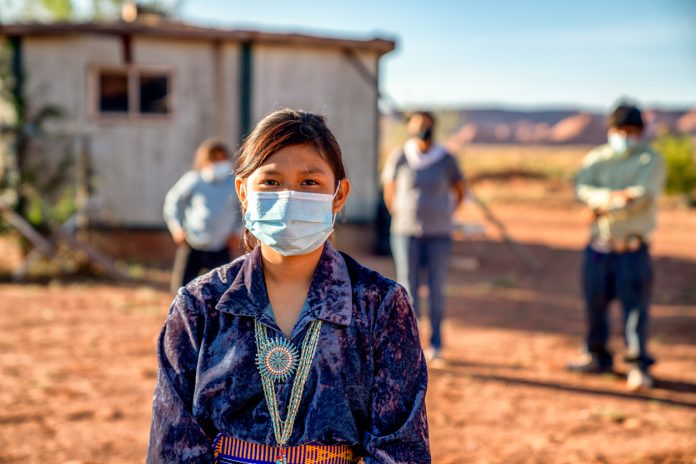Geoffrey Roth, Expert Member of the United Nations Permanent Forum on Indigenous Issues (UNPFII), discusses efforts to recognize and tackle health challenges that Indigenous Peoples face
There are many endemics and challenges that impact Indigenous Peoples. Across the world, we are disproportionately affected by chronic conditions and lower life expectancy; we have a higher prevalence of cardiovascular diseases and substance abuse. Additionally, Indigenous Peoples are becoming increasingly urban residents without access to health services. City living challenges our food choices, access, health, and wellbeing. Some of these health challenges relate to disease, while others to the mind, spirit, and culture. Regardless, there is a common thread to these circumstances: colonial and neocolonial practices continuously marginalize Indigenous Peoples either through socioeconomic means, health access exclusion, damaging policies, or cultural genocide.
This is why the conceptualization of indigeneity as an overarching determinant of health is so important. Through a United Nations Permanent Forum on Indigenous Issues-Member study, we have proposed that the World Health Organization and other UN Subsidiary bodies adopt the concept of ‘Indigeneity’. It effectively encompasses determinants of health that are specific to Indigenous Peoples. The World Health Organization’s draft of the World Report on the Social Determinants of Health and Equity to be published this year includes 13 Social Determinants of Health levers. Adding Indigeneity as the 14th lever would mean prioritizing the health and wellness of Indigenous Peoples. It would also mean that Indigenous Peoples finally have the recognition that the determinants of health of Indigenous Peoples are unique and separate from other vulnerable and geographically adjacent populations. Indigeneity is unique not only because of the past and present treatment of Indigenous Peoples but also because of the connection between Indigenous Peoples’ environment, deep-rooted cultural beliefs, and other components that are not usually found in colonial approaches (self-determination, identity, culture, traditional medicine).
What is driving the significant health disparities that Indigenous communities often face?
When we think of all the mental, physical, and spiritual health challenges that Indigenous Peoples face, it is paramount that we realize that our circumstances stem from intergenerational challenges that are different from those of local populations and national minorities. National governments and UN agencies insist on minoritizing Indigenous Peoples by addressing our issues along with other communities, which—as proven over and over, is the wrong approach because equity for Indigenous Peoples is not achieved. Instead, our health priorities are buried by issues from populations that outnumber our communities. Another intrinsically related driver is the lack of substantial engagement and representation in technical, policy, and decision-making work groups. By including Indigenous Peoples at the core of all planning, data gathering, action planning, etc., we can begin the process towards remedying these challenges through Indigenous knowledge and culturally safe methodologies. For far too long, Indigenous Peoples have not had the chance to voice their concerns, ideas, and opinions when it comes to deciding what the best practices are for improving their health and wellness. By having Indigenous researchers, decision-makers, and leaders at the core of all planning, we better understand who, what, when, where, and why these challenges exist. In a sense, it will create a better, bigger, and clearer picture of the challenges. Doing so will also help contribute more accurate data to represent Indigenous Peoples. Right now, data about Indigenous Peoples is very limited. These limited data sets can create an inaccurate representation of Indigenous Peoples’ challenges.
Recent milestones in enhancing the physical and mental health of Indigenous Peoples
There have been some significant milestones to enhance not only the physical and mental health of Indigenous Peoples but also spiritual health. First, in May of 2023, a historic resolution was passed during the World Health Assembly. The resolution calls for the Director-General of the World Health Organization to develop a comprehensive global action plan that prioritizes the health and wellness of Indigenous Peoples. This means Indigenous people’s health is a priority for the first time in WHO history. Secondly, a new study has been published within the United Nations system called ‘Improving the Health and Wellness of Indigenous Peoples Globally: operationalization of Indigenous Determinants of Health’. This paper was written by three UN expert members and 22 Indigenous scholars, researchers, experts, and leaders from around the globe. It provides practical instrumentation guidelines on the institutional components that must be incorporated or changed to meet the defined principles of the UN Declaration on the Rights of Indigenous Peoples and the Free Prior Informed Consent principle. In addition to discussing Indigenous representation and meaningful engagement, it provides tools for incorporating meaningful interventions and approaches, equitable integration of Indigenous research and evaluation methodologies, land ownership and environmental management, and optimal participation in policymaking cycles.
Indigenous leadership in devising approaches to improve health outcomes and planning pathways to health equity
Pretend you are going for a walk in the park. As you’re walking, you see this child riding his bike, and he crashes. You’re the only person around; you don’t see his parents anywhere. What would you do? You will most likely walk up and ask the child if he is okay. You might ask questions like what is your name? What hurts?
How did you crash? Where are your parents? You ask the individual encountering the problem for more details about the situation. This should be the standard way of addressing problems. Now, let’s throw this into a bigger context. You’re dealing with a large community that’s being affected by X’s problem. The first thing you should do is engage the community. Do some fieldwork and have the community that’s being affected TELL you the problem. Let them tell you what’s wrong, what is working, and what isn’t working, and listen rather than going in and asking a series of questions that may not be relevant or understood by the community. Now, when applying this to Indigenous Peoples, it’s pretty much the same. When you have Indigenous representation and Indigenous leadership helping to improve health outcomes and planning pathways to health equity, then you have someone who is a knowledge expert on what is happening in the communities, or you have someone who has access to the knowledge needed from the community.
That is why we must be at the decision-making table and at the forefront of enacted policies. I want to call on all people and especially my Indigenous brothers and sisters to advocate for an increase in substantial representation. Being appropriately represented will accelerate the much-needed systemic change. Indigenous leaders must be steering the work of defining the policies, initiatives, and projects impacting Indigenous populations at the global and national levels. Likewise, I encourage Indigenous scholars, policymakers, students, and community representatives to use the Indigenous Determinants of Health framework to ensure all aspects of our Indigenous, holistic, and intergenerational perspective and the operationalization of our Indigenous health rights are included, respected, and protected.











